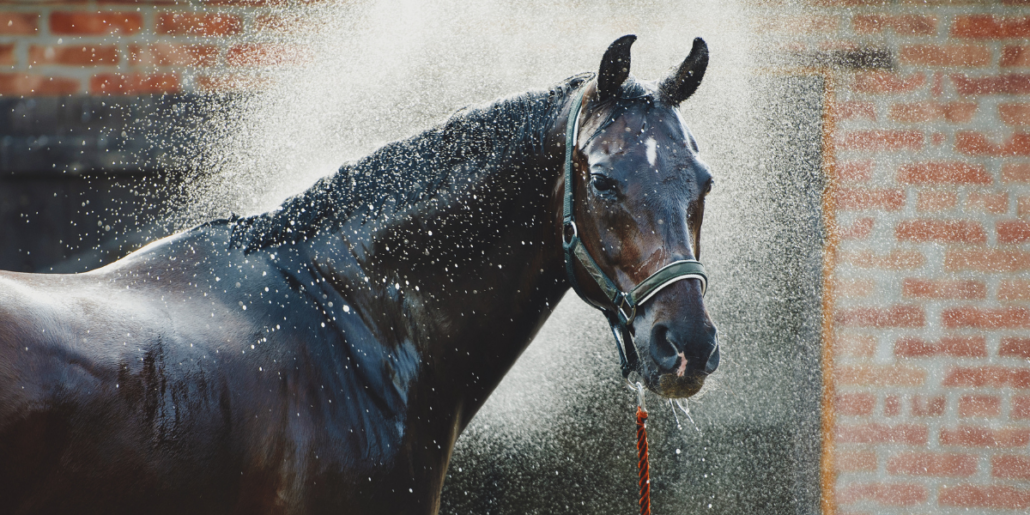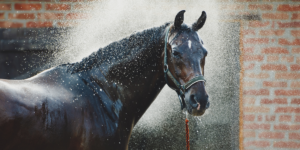For the optimal functioning of your horse’s body, it is important that body temperature remains constant.
If your horse gets too hot, certain functions can become disrupted. In the extreme case, overheating can even result in death.
Very important to regulate the temperature of your horse.
Speaking of which, the process of keeping body temperature constant is called thermoregulation. There are two ways:
- absorbing or releasing heat to the environment (by means of cold water, lying on a cool floor, fresh wind)
- absorbing or releasing heat via heat radiation (by sweating)
The ideal temperature for a horse is much lower than ours
The ideal temperature for a horse is between -5 and 15 degrees. In this case, your horse does not need to create or release extra heat to keep his body temperature constant (thermo-neutral zone).
Horses get hot faster than we do.
A horse can withstand cold quite well, but with heat it is a different story. Because of the surface-content ratio, we are much more resistant to hot weather conditions than your horse.
A horse has much more trouble losing its heat in warmer weather than we do.
After a training, the temperature of your horse will have risen. For a dressage horse, the temperature is usually between 39 and 40 degrees.
He releases this heat again through an increased breathing rate, sweating, open up the blood vessels of the legs and also through feces and urine.

Recognize the signs of overheating
Signs that your horse is overheated:
- The heart rate is increased for a long time (>30 min)
- The breathing frequency is increased for a long time (>30 min)
- Breathing is irregular
- Body temperature does not decrease after 30 minutes
5 tips to prevent overheating
What can you do to ensure that your horse does not overheat at high temperatures:
- Shorten the warming-up because less time is needed to warm up your horse’s muscles
- Shorten total training time so your horse can perform adequately
- Cool well after training
- Make sure your horse have enough water
- Fill in (if necessary) electrolytes on
Let’s talk about the third tip, cooling down. The single most important way to release heat is sweating. And especially the evaporation of sweat.
By cooling with cold water you can help your horse enormously. The water does heat up quickly, so continue cooling long enough (approx. 20 minutes). A quick cold rinse on a hot day is therefore not enough.
And make sure that the water is cold enough, between 0 and 10 degrees.
Fans can also help your horse cool down.
With an hour of galloping, your horse loses up to 20 liters of fluid
It is also important to know that your horse loses a lot of fluid with a lot of sweating. If the ambient temperature is 30 degrees, your horse will lose about 1 liter of moisture with 1 hour of walking. With an hour of trot, this already becomes 15 liters of moisture. And with an hour gallop 20 liters of fluid.
This moisture must be replenished and your horse must therefore drink well. Make sure that your horse gets enough water and that there is always water available for your horse.
When sweating, your horse also loses a lot of electrolytes. These are important salts in the body and it is good to replenish them. In that case it is extra important that your horse drinks enough, otherwise he will only dry out.
What measures do you take at the high temperatures?




